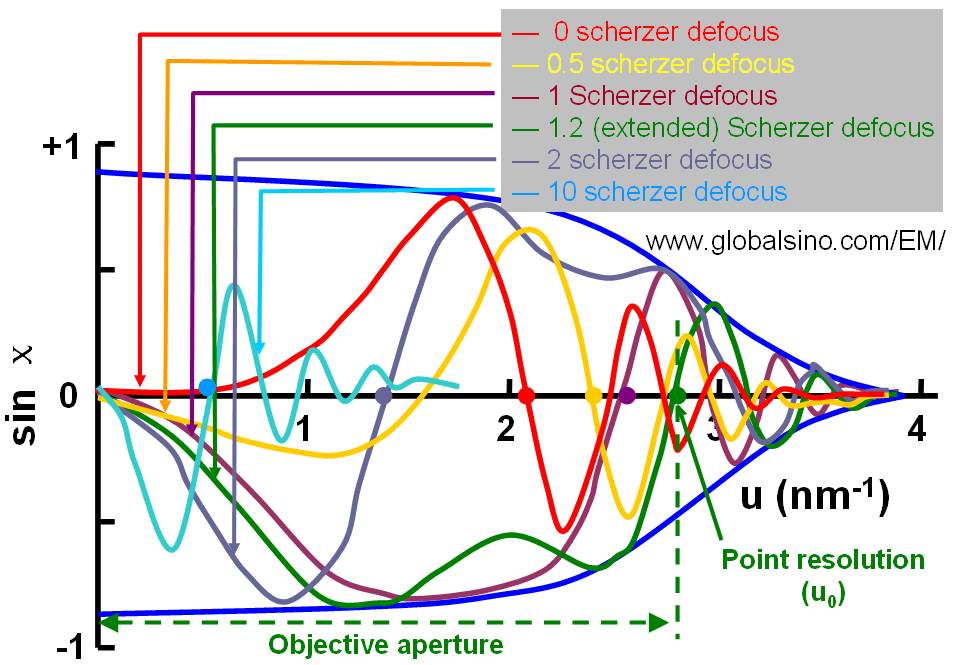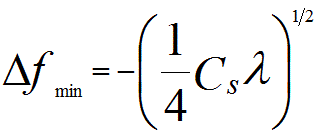=================================================================================
For (HR)TEM imaging, CTF (contrast transfer function) partially changes the contrast of the images by adjusting Scherzer defocus. Assuming Cs and λ are constant for a specific microscope, Figure 4233 shows CFT T(|g|) = sin(χ) at n Scherzer defoci, given by,
 ------------------------------- [4233a]
------------------------------- [4233a]
where,
n -- 0, 0.5, 1, 1.2 (extended), 2, and 10

Figure 4233. Contrast transfer function (CFT) at 0, 0.5, 1, 1.2 (extended), 2, and 10 Scherzer defoci.
At 0.5 Scherzer defocus, the minimum phase-contrast defocus can be given by, [1]
 -------------------------- [4233b] -------------------------- [4233b]
In this case, the contrast is close to zero. This special defocus condition, Δfmin, is called Gaussian defocus, which is about -20 nm (obtained from Equation 4233b) above the exit surface of the specimen. Under this condition, the information is transferred from a thin object at a spatial frequency given by,
 -------------------------- [4233c] -------------------------- [4233c]
Note that at the minimum phase-contrast defocus, the defocus aberration and the spherical aberration do not cancel out properly at higher spatial frequencies.
Assuming the TEM optics are well aligned (including beam tilt and astigmatism are zero), then Gaussian defocus provides TEM images the well-defined minimum contrast and Scherzer defocus gives a maximum contrast.
[1] Heinemann, K. (1971). In-situ measurement of objective lens data
of a high-resolution electron microscope. Optik 34, 113–128.
|